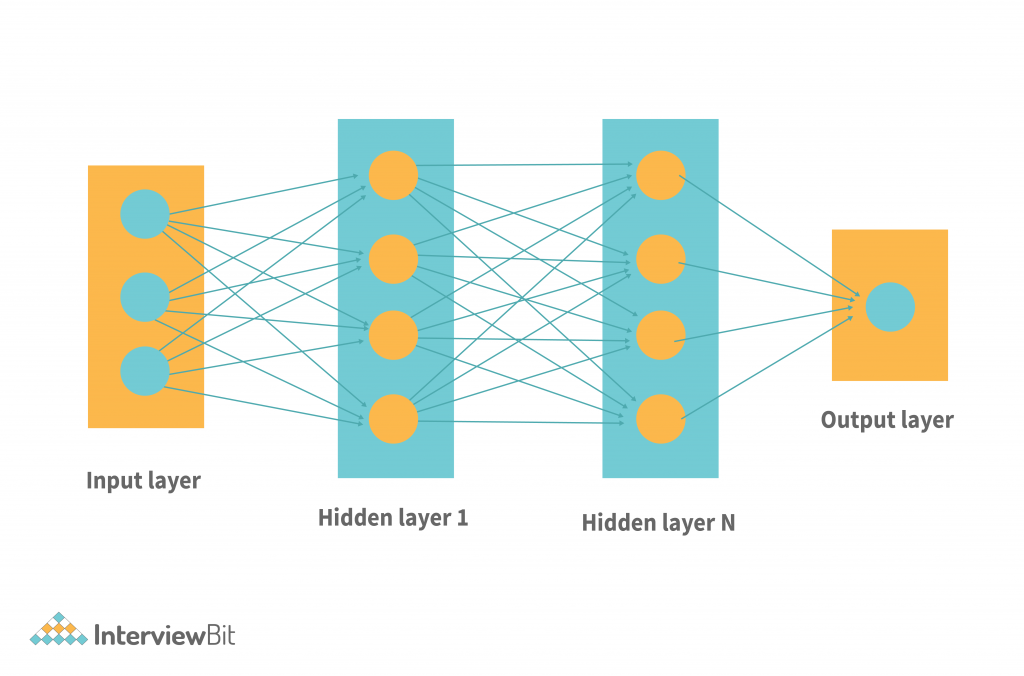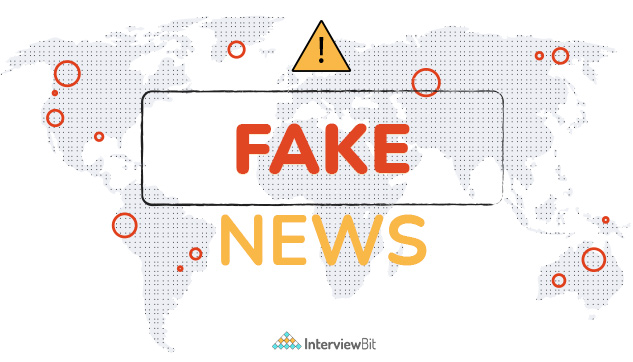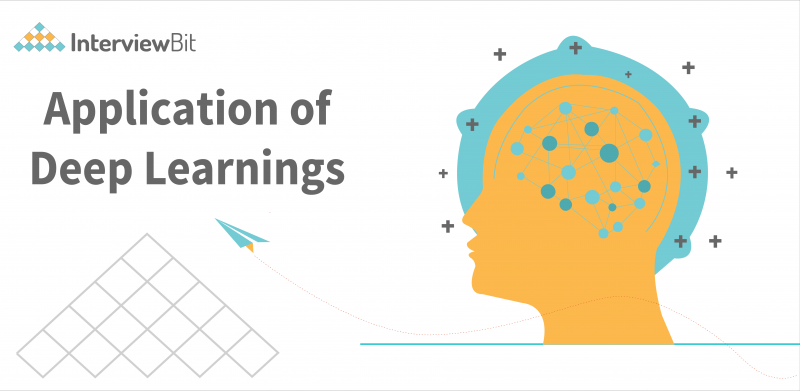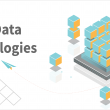- Understanding Deep Learning
- Top 10 Applications of Deep Learning
- 1. Healthcare
- 2. Personalized Marketing
- 3. Financial Fraud Detection
- 4. Natural Language Processing
- 5. Autonomous Vehicles
- 6. Fake News Detection
- 7. Facial Recognition
- 8. Recommendation Systems
- 9. Smart Agriculture
- 10. Space Travel
- Conclusion
- Additional Resources
For us humans, the novel idea of creating machines that can mimic human intellect, and even augment it, has been and still is, of great interest. And it is thanks to the efforts made around this idea that Artificial Intelligence, Machine Learning and later, Deep Learning came into existence.
Now, these three concepts, or rather technologies, are interesting on their own. However, citing the limitations of the topic we have at hand, we will primarily discuss Deep Learning here.
Deep Learning is probably the closest we have come so far to engineering a system based on the working of the brain. It is a complicated system that endeavors to solve problems and learn concepts that we were once limited to human intelligence.
Confused about your next job?
Identifying images, translating human language, conversing with humans and assisting computers to make independent decisions are some of the innumerable purposes that Deep Learning fulfils.
Many businesses and organizations across the globe are now employing Deep Learning to fuel their growth and enhance their operations. They are using it to predict consumer behaviour, detect changes in market trends, create marketing strategies and whatnot.
Furthermore, according to ReportLinker, the market for Deep Learning will be valued at a whopping $44.3 Billion by 2027.
Thus, it makes sense for us to know about some of the most commonplace but significant Deep Learning applications in today’s world. And that’s what we are going to look at in this article on applications of deep learning. But before that, let us gather some insights into what deep learning is.
Understanding Deep Learning
Deep learning is fundamentally a subdiscipline of Machine Learning (hence the “learning” in the name). It bases its operations on another subset of machine learning called Neural Networks.
Neural Networks are networks of neurons or nodes – algorithmic locations where the computation of inputs takes place and output is produced. Neural networks are either biological or artificial, with the latter ones finding use in many AI-propelled applications.
These networks are essentially a somewhat less sophisticated reproduction of the biological structure of the human brain, with the nodes signifying the neurons or nerve cells.
Thus, Deep Learning is a machine learning technique composed of Artificial Neural Networks (ANNs) that are layered. Each layer comprises a certain number of neurons that receive input, compute it, and forward the output to the next layer until it reaches the final layer. Typically, except for the first layer, called the input layer, and the last layer, the output layer, the rest of the layers stay hidden in a deep learning system.

Top 10 Applications of Deep Learning
In the earlier section, we discussed the basics of Deep Learning. Now, it is time we answered the million-dollar question, “which are common applications of deep learning in artificial intelligence(ai)?”
1. Healthcare

The healthcare sector has long been one of the prominent adopters of modern technology to overhaul itself. As such, it is not surprising to see Deep Learning finding uses in interpreting medical data for
- the diagnosis, prognosis & treatment of diseases
- drug prescription
- analysing MRIs, CT scans, ECG, X-Rays, etc., to detect and notify about medical anomalies
- personalising treatment
- monitoring the health of patients and more
One notable application of deep learning is found in the diagnosis and treatment of cancer.
Medical professionals use a CNN or Convolutional Neural Network, a Deep learning method, to grade different types of cancer cells. They expose high-res histopathological images to deep CNN models after magnifying them 20X or 40X. The deep CNN models then demarcate various cellular features within the sample and detect carcinogenic elements.
2. Personalized Marketing
Personalized marketing is a concept that has seen much action in the recent few years. Marketers are now aiming their advertising campaigns at the pain points of individual consumers, offering them exactly what they need. And Deep Learning is playing a significant role in this.
Today, consumers are generating a lot of data thanks to their engagement with social media platforms, IoT devices, web browsers, wearables and the ilk. However, most of the data generated from these sources are disparate (text, audio, video, location data, etc.).
To cope with this, businesses use customisable Deep Learning models to interpret data from different sources and distil them to extract valuable customer insights. They then use this information to predict consumer behaviour and target their marketing efforts more efficiently.
So now you understand how those online shopping sites know what products to recommend to you.
3. Financial Fraud Detection
Virtually no sector is exempt from the evil called “fraudulent transactions” or “financial fraud”. However, it is the financial corporations (banks, insurance firms, etc.) that have to bear the brunt of this menace the most. Not a day goes by when criminals attack financial institutions. There are a plethora of ways to usurp financial resources from them.
Thus, for these organizations, detecting and predicting financial fraud is critical, to say the least. And this is where Deep Learning comes into the picture.
Financial organizations are now using the concept of anomaly detection to flag inappropriate transactions. They employ deep learning algorithms, such as logistic regression (credit card fraud detection is a prime use case), decision trees, random forest, etc., to analyze the patterns common to valid transactions. Then, these models are put into action to flag financial transactions that seem potentially fraudulent.
Some examples of fraud detection being deterred by Deep Learning include:
- identity theft
- insurance fraud
- investment fraud
- fund misappropriation
4. Natural Language Processing
NLP or Natural Language Processing is another prominent area where Deep Learning is showing promising results.
Natural Language Processing, as the name suggests, is all about enabling machines to analyze and understand human language. The premise sounds simple, right? Well, the thing is, human language is punishingly complex for machines to interpret. It is not just the alphabet and words but also the context, the accents, the handwriting and whatnot that discourage machines from processing or generating human language accurately.
Deep Learning-based NLP is doing away with many of the issues related to understanding human language by training machines (Autoencoders and Distributed Representation) to produce appropriate responses to linguistic inputs.
One such example is the personal assistants we use on our smartphones. These applications come embedded with Deep Learning imbued NLP models to understand human speech and return appropriate output. It is, thus, no wonder why Siri and Alexa sound so much like how people talk in real life.
Another use case of Deep Learning-based NLP is how websites written in one human language automatically get translated to the user-specified language.
5. Autonomous Vehicles
The concept of building automated or self-governing vehicles goes back 45 years when the Tsukuba Mechanical Engineering Laboratory unveiled the world’s first semi-automatic car. The car, a technological marvel then, carried a pair of cameras and an analogue computer to steer itself on a specially designed street.
However, it wasn’t until 1989 when ALVINN (Autonomous Land Vehicle in a Neural Network), a modified military ambulance, used neural networks to navigate by itself on roads.
Since then, deep learning and autonomous vehicles have enjoyed a strong bond, with the former enhancing the latter’s performance exponentially.
Autonomous vehicles use cameras, sensors – LiDARs, RADARs, motion sensors – and external information such as geo-mapping to perceive their environment and collect relevant data. They use this equipment both individually and in tandem for documenting the data.
This data is then fed to deep learning algorithms that direct the vehicle to perform appropriate actions such as
- accelerating, steering and braking
- identifying or planning routes
- traversing the traffic
- detecting pedestrians and other vehicles at a distance as well as in proximity
- recognising traffic signs
Deep learning is playing a huge role in realizing the perceived motives of self-driving vehicles of reducing road accidents, helping the disabled drive, eliminating traffic jams, etc.
And although still in nascent stages, the day is not far when we will see deep learning-powered vehicles form a majority of the road traffic.
6. Fake News Detection

The concept of spreading fake news to tip the scales in one’s favour is not old. However, due to the explosive popularity of the internet, and social media platforms, in particular, fake news has become ubiquitous.
Fake news, apart from misinforming the citizens, can be used to alter political campaigns, vilify certain situations and individuals, and commit other similar morally illegible acts. As such, curbing any and all fake news becomes a priority.
Deep Learning proposes a way to deal with the menace of fake news by using complex language detection techniques to classify fraudulent news sources. This method essentially works by gathering information from trusty sources and juxtaposing them against a piece of news to verify its validity.
This paper explains how a combination of Convolutional Neural Networks (CNNs) and Recurrent Neural Networks (RNNs) can validate digital news with high accuracy.
7. Facial Recognition
Facial Recognition is the technological method of identifying individuals from images and videos by documenting their faces. It uses advanced biometric technology to record a person’s face and match it against a database to extract their identity.
Facial Recognition is an old technology, first conceptualized in the 1960s. However, it is the integration of neural networks in facial recognition that exponentially increased its detection accuracy.
Deep Learning enforced Facial Recognition works by recording face embeddings and using a trained model to map them against a huge database of millions of images.
For instance, DeepFace is a facial recognition method that uses Deep Learning (hence the name) to identify persons with a recorded 97% accuracy rate. It uses a nine-layer neural network for its purpose and has been trained using four million images of about 4000 individuals.
8. Recommendation Systems

Have you ever stopped to think about how Spotify knows which genres you listen to or, how Netflix recommends shows that match your preferences exactly? The short answer is Deep Learning. And the long answer, well, it is still deep learning but with some added explanation.
As discussed earlier, Deep Learning models process user data acquired from different sources and compile them to extract consumer info. This information then goes into deep learning-based recommender systems to generate appropriate suggestions for the users.
Deep Learning empowered suggestions, although widely used by audio/video streaming services, are not just limited to them. Social media networks use similar systems to recommend relevant posts, videos, accounts and more to users in their feeds.
9. Smart Agriculture

Artificial Intelligence and its subsets are fortifying a lot of industries and sectors, and agriculture is no different.
Of late, smart farming has become an active agricultural movement to improve upon the various aspects of traditional agriculture. Farmers are now using IoT devices, satellite-based soil-composition detection, GPS, remote sensing, etc., to monitor and enhance their farming methods.
Deep Learning algorithms capture and analyse agriculture data from the above sources to improve crop health and soil health, predict the weather, detect diseases, etc.
Deep learning also finds uses in the field of crop genomics. Experts use neural networks to determine the genetic makeup of different crop plants and use it for purposes like
- increasing resilience to natural phenomena and diseases
- increase crop yield per unit area
- breeding high-quality hybrids
10. Space Travel
For most of us, space travel is something we associate with the most advanced technology available to humankind. We think of humanoid robots, hyper-intelligent AIs, hi-tech equipment, etc., working relentlessly in space to assist the astronauts in their painstaking endeavours.
However, while most of this stuff is over-the-top, it does signal one aspect of space flight – that it is technologically demanding.
Scientists and engineers need to implement the latest and most efficient technologies – both hardware and software – to ensure the safety, integrity and success of space missions.
Thus, it goes without saying that AI, Machine Learning and Deep Learning are crucial components of everything astronomy.
For instance, ESA states that Deep Learning can be (and is, to some extent) used in
- automating the landing of rockets
- building space flight systems that can make intelligent decisions without human intervention
Also, deep learning will play an active role in helping future rovers on Mars to navigate and deduce their surroundings better and more independently.
Conclusion
There we go, a list of top 10 deep learning applications to quench your intellectual thirst. These applications, though not exhaustive, hint at what the future of deep learning can be.
Deep Learning is a relatively newer concept or technology than AI and ML. However, its potential to revolutionize industries and organizations in the coming years is equal to, if not more than, its seniors.
From more advanced and humanoid personal assistants to completely driverless cars, we are sure Deep Learning is going to change our lives in more ways than one.
Embrace the transformative potential of Deep Learning, a cutting-edge technology poised to reshape industries and organizations in the years ahead. Enroll in a deep learning course to stay ahead of the curve and harness its unparalleled capabilities.




